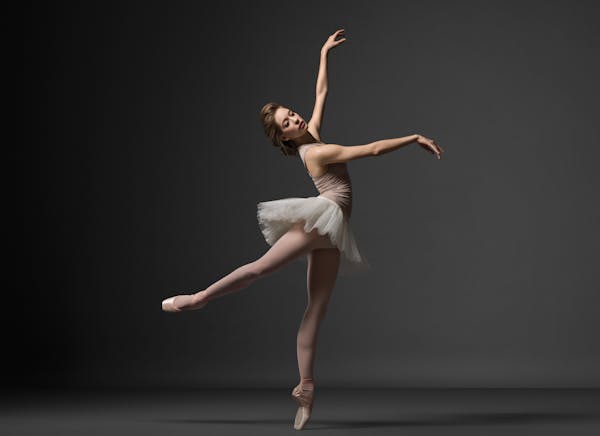New York City Ballet MOVES delivered a varied and energetic program Tuesday at the Orpheum Theatre in Minneapolis. The touring troupe features City Ballet stars plus up-and-coming talents. An innovative spirit still thrives within the venerable institution, now in its 64th year, particularly in repertory selections from City Ballet's late co-founder George Balanchine as well as William Forsythe.
Balanchine spurred the 20th-century ballet revolution, streamlining movement and re-inventing its relationship to music. One example is his "Duo Concertant" (1972) with an Igor Stravinsky score (played live by violinist Lydia Hong and pianist Cameron Grant). Principal Megan Fairchild and soloist Chase Finlay dance nimbly within the shifting confines of the composition, generating lightness and freedom from care (punctuated by darker moments) throughout the intricate conversational interplay between their bodies.
Forsythe's "Herman Schmerman (Pas de Deux)," portrays a complex kinetic relationship between principals Maria Kowroski and Robert Fairchild. The dancers' limbs alternately extend to their utmost potential and then curl up into one other. Hips and torsos swivel with an almost elastic ease. The piece has tiny surprises, notably pratfalls transformed into elegant moments against Thom Willems' deconstructed funhouse score. Both Kowroski and Fairchild perform this 1992 work, the evening's highlight, with subtle wit and sophistication.
City Ballet Artistic Director Peter Martins' "Hallelujah Junction" (2001) is a showstopper set to music for two pianos by John Adams (performed by Susan Walters and Grant). Principals Robert Fairchild, Sterling Hyltin and Daniel Ulbricht guide a corps of eight through fast-paced and rhythmically demanding choreography. Ulbricht is a dynamo, a compact dancer whose turns and leaps have giddy buoyancy. Hyltin projects preternatural calm even as she whips across the stage with tight precision.
Christopher Wheeldon's "Polyphonia" (2001), is performed to 10 piano works by György Ligeti. The dissonant music is reflected in the dancing, which can come off as too deliberate and calculated. And Martins' "Zakouski" (1992), although interpreted fluidly by principals Tiler Peck and Andrew Veyette, is an odd choice. In a program defined by bolder contemporary perspectives, this more traditional duet, set to four works by Russian composers, feels conservative and out of step.
Caroline Palmer writes regularly about dance.

This retired journalist changed professional wrestling from Mankato

All-Metro Sports Awards: Here are the 2023 winners

